Therapy for ADHD is gaining attention as more parents look for ways to help their children improve focus and social skills. Children with ADHD often struggle with concentration and interacting with others, which can make daily life challenging. Pediatric occupational therapy is one approach that offers hope. It helps children build the skills they need to manage their ADHD symptoms more effectively.
But how effective is therapy for ADHD? Which methods work best? These are essential questions for parents and guardians seeking the proper support for their children. This blog will explore how occupational therapy can make a difference and what techniques are most successful.
Key Takeaways
- Pediatric occupational therapy uses sensory integration therapy to improve ADHD children’s response to stimuli, focus, and social skills.
- Play-based activities in occupational therapy help reduce ADHD symptoms like impulsivity and hyperactivity, enhancing executive functioning.
- The therapy employs techniques like mindfulness, behavior charts, movement breaks, and sensory tools to manage ADHD symptoms and improve focus.
- Occupational therapists collaborate with educators to create supportive learning environments, aiding ADHD children’s focus and academic performance.
- Occupational therapy interventions in school settings can enhance communication skills, improve peer relationships, and boost social skills for children with ADHD.
Understanding ADHD in Children: What Every Parent Should Know
Understanding ADHD in children is critical in managing and improving their quality of life. Early symptoms can include difficulty sustaining focus and excessive fidgeting, while more severe signs can involve outbursts of feelings and forgetfulness that impact daily responsibilities. To assist with this, we will initially investigate how to recognize early signs of ADHD and then explain the process of obtaining an ADHD diagnosis. Lastly, we will demystify this condition by addressing some of the common myths and facts about ADHD in children.
Recognizing the Early Signs of ADHD
Recognizing the early signs of Attention-Deficit/Hyperactivity Disorder (ADHD) in children is crucial for timely intervention. Early intervention can significantly enhance the overall quality of life, improving skill development and social interactions. Numerous pediatric OT strategies, including sensory integration and behavioral reinforcement, can be particularly effective.
Behavioral assessments are often vital in identifying ADHD. Several signs may indicate the presence of this disorder. Here is a list:
- Persistent difficulty in paying attention may manifest in academic challenges.
- High levels of hyperactivity, including constant fidgeting and an inability to remain seated.
- Spontaneous behaviors, such as interrupting others and acting without considering consequences.
- Issues with social skills, including struggles in forming and maintaining friendships.
Parent education plays a crucial role in the early identification of ADHD. Informed parents can identify potential symptoms and seek professional advice promptly. Therapy techniques, such as pediatric occupational therapy, are then used to address the identified issues. These approaches focus on enhancing the child’s skills in areas they struggle with, such as maintaining focus or improving social interactions. Recognizing the signs of ADHD early on is essential in enabling effective treatment and fostering optimal child development.
The Process of Getting an ADHD Diagnosis
Having recognized the early signs of ADHD, determining the next steps toward diagnosis is the subsequent phase. The ADHD diagnosis process involves a thorough assessment with several essential steps, such as a clinical interview, behavioral observations, and norm-referenced tests. Clinicians may also inquire about the child’s social skills development, as challenges in this area are common in children with ADHD.
Understanding the child’s distinct challenges and subtypes of ADHD can help guide the diagnosis and subsequent treatment plan. This approach is based on the recognition that ADHD subtypes are linked to structural and functional anomalies in the brain and, as such, require customized interventions.
Pediatric occupational therapy can play a crucial role in this process, particularly regarding focus improvement techniques. These methods help pinpoint areas where the child may face difficulties maintaining attention, a typical characteristic of ADHD. Moreover, sensory integration therapy is frequently employed to assess how the child reacts to specific stimuli, which can also provide insights into ADHD.
Once a diagnosis is confirmed, the child may embark on a treatment plan to enhance executive functioning. This strategy aids the child in improving cognitive skills like planning, organizing, and prioritizing, which can present challenges for children with ADHD. Ultimately, grasping the process of obtaining an ADHD diagnosis is essential for parents who suspect their child may have this condition.
Common Myths and Facts About ADHD in Children
Did you know that ADHD is one of the most misunderstood conditions in pediatric health? Despite its prevalence, misconceptions persist. Parent education is essential in debunking these myths and promoting a balanced understanding of ADHD. As part of this process, pediatric occupational therapists play a significant role in developing strategies tailored to each child’s needs, fostering improved attention span, and promoting healthy social interaction.
- Myth: ADHD is a result of poor parenting. Fact: ADHD is a neurodevelopmental disorder, not a consequence of parenting style. Behavior management strategies can help manage symptoms, but they do not cause ADHD.
- Myth: Children with ADHD are just lazy. Fact: ADHD affects a child’s cognitive development and sensory processing, making it difficult to focus and complete tasks.
- Myth: ADHD affects only boys. Fact: Both boys and girls can have ADHD. The symptoms might manifest differently, involving social interaction.
- Myth: ADHD will outgrow it. Fact: While some children may see decreased symptoms, many continue to experience them into adulthood.
Understanding ADHD in children can lead to better support systems, more effective treatments, and improved outcomes. Pediatric occupational therapy plays a vital role in this process, providing strategies for managing ADHD and promoting healthy development.
How Occupational Therapy Supports ADHD Development
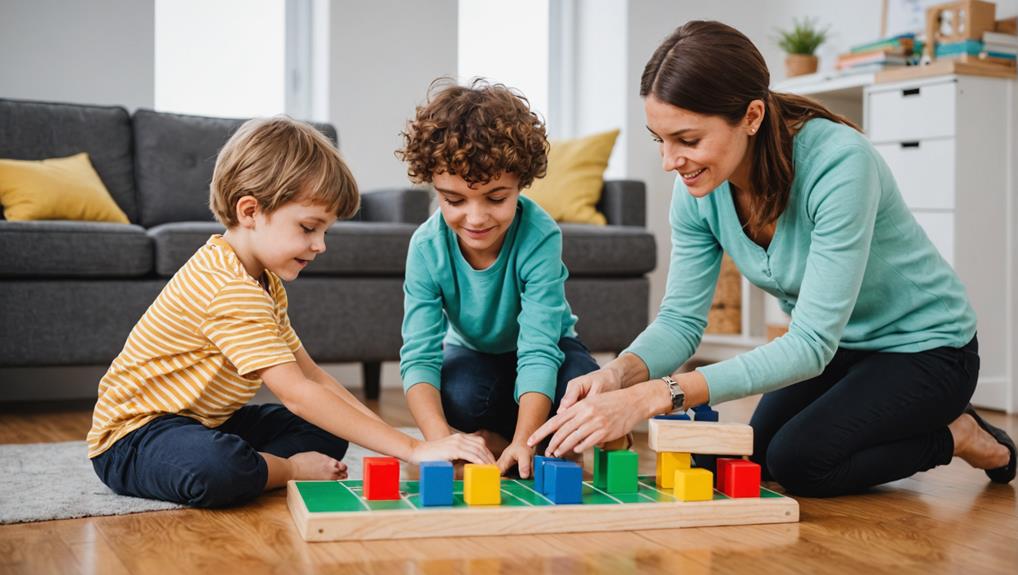
Pediatric Occupational therapy plays a critical role in supporting ADHD development, primarily through targeted strategies and activities. This includes customizing routines to specific strengths and weaknesses to improve compliance and participation. One effective method is Sensory Integration Therapy, which boosts focus by addressing sensory challenges. Extra strategies include play-based activities to improve executive functioning and specific interventions to decrease impulsivity and hyperactivity. These strategies, along with a cooperative approach, can enhance comprehensive support for children with ADHD.
Sensory Integration Therapy for Better Focus
Exploring the world can be a challenging endeavor for a child with ADHD. Sensory integration therapy, a key component of pediatric occupational therapy, is designed to help these children. This inventive approach aids in focus improvement, attention regulation, and the development of social skills.
- Sensory Integration: This is receiving and responding to sensory information. Children with ADHD often struggle with this. Occupational therapists use sensory integration therapy to help these children react more appropriately to stimuli, enhancing their ability to interact with their environment.
- Focus Improvement: Exercises can help children learn to concentrate and pay attention better, positively impacting their academic and social lives.
- Attention Regulation: Behavioral therapy techniques can help children with ADHD regulate attention. This can help them stay on task and reduce impulsivity.
- Social Skills: Occupational therapy can help children with ADHD improve their social skills. This includes learning to read social cues, understanding the feelings of others, and improving communication skills.
Improving Executive Functioning Through Play
While sensory integration therapy aids attention regulation and social skills development, another critical area of pediatric occupational therapy focuses on enhancing executive functioning through play. This approach, often termed play therapy, utilizes games and activities to foster cognitive development in children with ADHD.
Play therapy stimulates mental growth and encourages social interaction, which is essential for children with ADHD who may struggle with social skills. For instance, a ‘Simon Says’ game can improve a child’s ability to follow instructions, enhancing their behavior management skills.
Furthermore, these play-based activities can aid in emotional regulation, a significant challenge for many children with ADHD. Children can apply these skills in diverse settings by learning to manage emotions during play.
| Play Therapy Activity | Skill Developed |
|---|---|
| Simon Says | Behavior Management |
| Puzzle Solving | Cognitive Development |
| Group Board Games | Social Interaction |
Through play therapy, pediatric occupational therapists can provide an enjoyable, relatable, and effective method for improving executive functioning in children with ADHD.
Strategies for Reducing Impulsivity and Hyperactivity
Impulsivity and hyperactivity, two hallmark characteristics of ADHD, can significantly impact a child’s ability to navigate daily tasks and social interactions. Pediatric occupational therapy offers several strategies to reduce these tendencies, thereby supporting ADHD development.
- Mindfulness Techniques improve self-regulation by helping children become more aware of their actions and responses. Children learn to pause and think before reacting through mindful breathing or guided imagery, reducing spontaneous reactions.
- Behavior charts visually represent desired behaviors and track progress. Behavior charts can help reduce hyperactivity and impetuousness by encouraging children to achieve specific goals.
- Movement Breaks: Regular physical activity breaks during tasks can help manage hyperactivity. These breaks provide a safe outlet for energy and can improve focus and productivity.
- Sensory Tools: Items like fidget spinners, stress balls, or weighted blankets can help manage restlessness and improve concentration.
- Social Stories: These personalized stories help children understand social cues and respond appropriately. By rehearsing these stories, children with ADHD can learn to control impulsive responses in real-world scenarios.
Practical Ways to Manage ADHD at Home
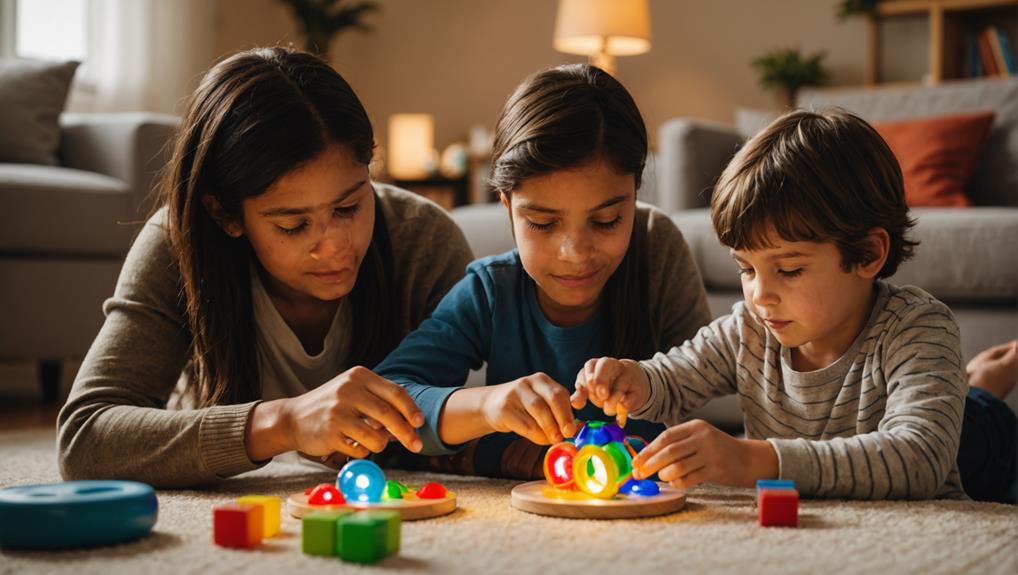
Managing ADHD at home effectively can significantly aid in a child’s holistic development and daily functionality. This segment will focus on establishing a consistent routine for children with ADHD, using calming techniques during instances of overstimulation, and the role of positive reinforcement in promoting desirable behavior. These practical strategies underscore parents and caregivers’ collaborative role in professional pediatric occupational therapy.
Establishing a Consistent Routine for Kids with ADHD
Setting a consistent routine for children with ADHD can serve as a cornerstone in managing their daily challenges at home. When coupled with effective behavioral strategies and sensory integration techniques, such routines can significantly improve the child’s focus, resulting in improved social development.
- Consistent routines: Establish a schedule for all daily activities, including wake-up times, meal times, homework, playtime, and bedtime. This provides a predictable structure that can reduce anxiety and enhance focus.
- Behavioral strategies: Implement positive reinforcement for desired behaviors. This could include a reward system or verbal praise, which motivates the child and reinforces positive actions.
- Sensory integration: Incorporate activities that help the child respond appropriately to sensory stimuli. This can range from physical exercises to calming activities, improving sensory modulation.
- Focus techniques: Teach strategies for maintaining attention during tasks. This could include breaking down tasks into manageable chunks or using visual aids to keep students engaged.
Calming Techniques for Overstimulation
In the bustling world of a child with ADHD, overstimulation can often lead to restlessness and anxiety. Calming techniques that focus on sensory regulation, attention strategies, mindfulness activities, self-regulation techniques, and behavioral interventions can be very effective.
Sensory regulation can help the child manage sensory input and respond appropriately. Various techniques can achieve this, such as deep pressure or soothing sounds.
Attention strategies aim to improve the child’s ability to focus. This might involve breaking tasks into manageable parts or using visual cues to guide the child’s attention.
Mindfulness activities, such as simple breathing exercises or guided imagery, can help the child stay grounded in the present moment, reduce anxiety, and improve concentration.
Self-regulation techniques can help children manage their emotions and behavior. This might involve teaching the child relaxation techniques or strategies for managing frustration.
Behavioral interventions could involve setting clear expectations and using consistent consequences to help the child to manage their behavior.
| Sensory Regulation | Attention Strategies | Mindfulness Activities |
|---|---|---|
| Deep pressure or soothing sounds | Breaking tasks into parts | Breathing exercises |
| Self Regulation Techniques | Behavioral Interventions | |
| Relaxation techniques | Clear expectations and consistent consequences |
Using Positive Reinforcement to Encourage Good Behavior
Utilizing the power of positive reinforcement can significantly improve behavior management in children with ADHD at home. This approach encourages the repetition of good behavior by presenting a motivating item or compliment immediately after the desired behavior is exhibited.
Positive reinforcement can be seamlessly integrated into a child’s routine through the following steps:
- Identify the desired behavior: Clear and specific behaviors, such as completing homework or maintaining good hygiene, should be identified.
- Create a reward system: A visual reward system, like a sticker chart, can help to track progress. The child should value the reward, a privilege, an object, or an activity.
- Apply the reinforcement consistently. Consistency is key in behavior management. The reinforcement should be immediate and specific to the behavior.
- Gradually reduce the rewards: Over time, reduce the frequency of the rewards as the behavior becomes ingrained.
These techniques, combined with other focus techniques and social skills training, can help children with ADHD to manage their symptoms effectively at home. Not only will they feel a sense of accomplishment, but their overall conduct will improve, leading to a better quality of life.
Helping Your Child with ADHD Succeed in School
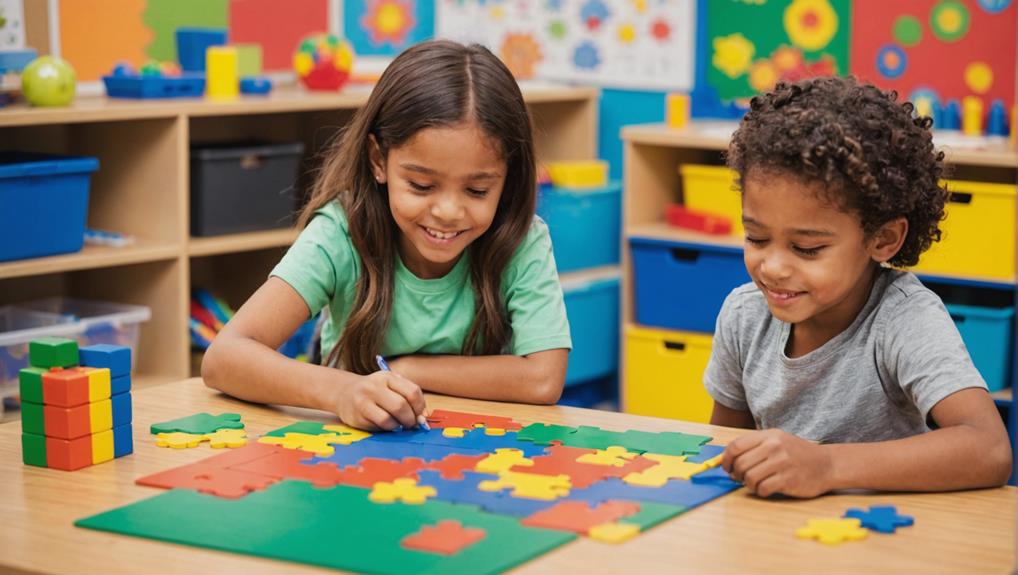
Assisting a child with ADHD to thrive in an academic setting involves multifaceted strategies. These include working closely with educators to establish a conducive learning environment and implementing accommodations that foster improved focus and behavior. Additionally, targeted support for homework can significantly enhance the academic success of a child with ADHD.
Working with Teachers to Create an ADHD-Friendly Learning Environment
How can we ensure that the educational setting is conducive to the success of a child with ADHD? Proactive educator collaboration, classroom adjustments, social skills improvement, focus methods, and sensory integration are the answer.
- Educator collaboration: This is a crucial element where the teachers, parents, and therapists work together to comprehend the child’s distinct needs and develop individualized strategies. Active teamwork guarantees that strategies are consistent across various settings, establishing a uniform framework for the child.
- Classroom adjustments include changes in the physical arrangement, teaching approaches, and evaluation methods that can make learning more accessible and enjoyable for the child with ADHD.
- Social skills improvement: Since children with ADHD often face challenges in social interactions, targeted interventions in a school environment can significantly boost their social skills.
- Focus methods: These are techniques designed to help children with ADHD improve their attention span and focus, such as providing one instruction at a time or using visual aids.
Accommodations That Can Improve Focus and Behavior
In ADHD management, adjustments in the school setting can play a crucial role in enhancing a child’s focus and behavior. Such modifications revolve around focus tactics, behavior control, sensory integration, executive functioning, and social skills development. Through the right mix of these components, a child with ADHD can flourish academically and socially.
Here are some examples of effective adjustments:
| Focus tactics & Executive functioning | Behavior control & Social skills |
|---|---|
| Visual timetables to structure the day | Clear and consistent guidelines |
| Breaks for sensory activities | Positive reinforcement methods |
| Tools for note-taking and organizing tasks | Social narratives and role-playing |
| Modifications in seating plans | Structured social interactions with peers |
| Assistance with shifting between activities | Teaching techniques for regulating emotions |
These strategies not only provide immediate assistance but also equip the child with skills to manage their ADHD symptoms in the long term. By implementing these adjustments, schools can provide an environment that acknowledges the child’s needs and promotes their overall growth. Pediatric occupational therapists can assist in this process, ensuring each child reaches their full potential.
How to Support Homework Success with ADHD
Supporting a child with ADHD to achieve successful homework outcomes can often feel like a challenging endeavor. However, effective homework strategies, focus techniques, and behavioral management can foster significant improvements.
- Homework strategies: Establish a structured routine and quiet workspace that minimizes distractions. Break tasks down into manageable parts to prevent overwhelming the child. Using planners or calendars can help track assignments and due dates.
- Focus techniques: Techniques such as deep breathing and mindfulness exercises can help increase focus and reduce impulsivity. Incorporating short breaks can also sustain the child’s attention and productivity.
- Social development: Encourage group study sessions or peer tutoring, as this can enrich social interaction and cooperation. Providing positive reinforcement for good behavior can enhance their social skills.
- Sensory integration: Fidget tools or weighted blankets can help manage the child’s sensory needs and refine their focus.
- Behavioral management: Consistent rules, expectations, and positive reinforcement can promote better homework habits.
Building Social Skills and Emotional Regulation in Kids with ADHD
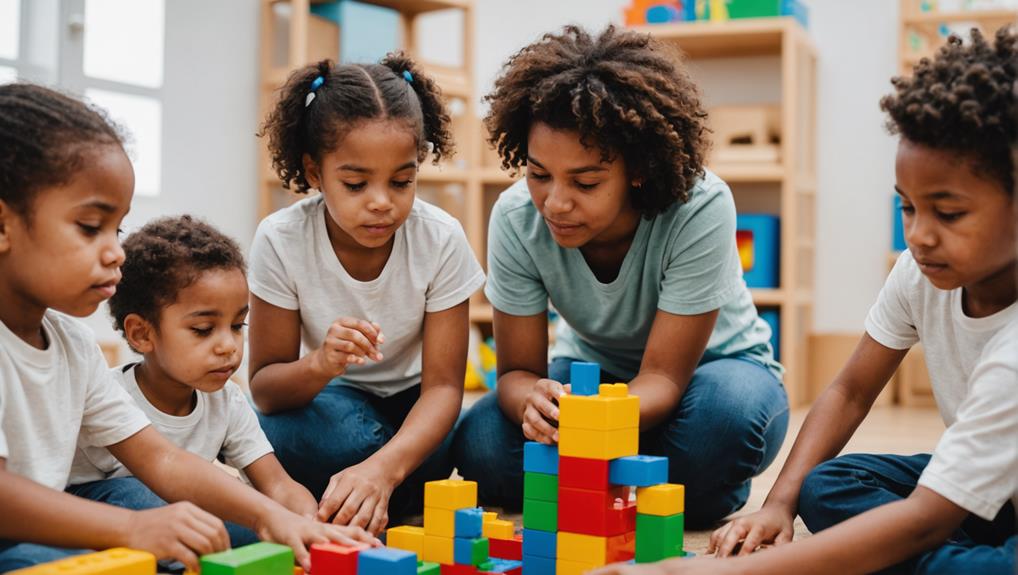
Children with ADHD often face challenges in building social skills and regulating their feelings. Pediatric occupational therapy’s role in facilitating healthy peer interactions and developing coping skills through play can be integral to their growth. Strategies to manage frustration and emotional outbursts will also be investigated to foster greater emotional regulation.
Facilitating Healthy Peer Interactions
Traversing the social landscape can be challenging for children diagnosed with ADHD, often due to struggles with impulse control and emotional regulation. Indeed, fostering healthy peer interactions is a pivotal aspect of pediatric occupational therapy for ADHD, as it lays the groundwork for more effective social interactions, friendship building, and communication skills.
- Peer Support: Cultivating an environment where children can access and offer peer support enriches their self-esteem. It also promotes a sense of belonging and allows them to learn from each other’s experiences.
- Social Interactions: Children with ADHD can have difficulty reading social cues. Structured group activities and role-play scenarios can help them practice and improve their social interactions.
- Friendship Building: Therapists can use diverse strategies to help children understand the value of friendship and how to build and maintain relationships.
- Communication Skills: Therapists can help children develop better verbal and non-verbal communication skills through targeted interventions.
Incorporating these elements into therapy promotes the development of social skills in children with ADHD, making it more straightforward for them to form and maintain positive relationships.
Developing Emotional Coping Skills Through Play
Often, developing coping skills through play is an essential part of pediatric occupational therapy for children diagnosed with ADHD. Play therapy is a therapeutic method that allows children to delve into their emotions and behaviors in a supportive and safe environment. It not only fosters emotional regulation but also facilitates social development.
Through play therapy, children learn to identify, express, and manage their feelings, which are vital coping strategies. They engage in various activities that challenge their sensory processing abilities, helping them better understand and respond to sensory stimuli in their environment.
Therapists mimic real-life scenarios using a variety of therapeutic toys and activities. This practice helps children with ADHD develop their problem-solving skills and emotional responses. As a result, they can better handle stress and frustrations, contributing to their overall social development.
Moreover, these playful sessions improve children’s self-esteem and self-confidence, enhancing their emotional regulation. By integrating play into therapy, pediatric occupational therapists can create a fun, engaging environment where children feel comfortable expressing themselves. This combination of play and therapy, thus, plays a pivotal role in developing emotional coping skills in children with ADHD.
Managing Frustration and Emotional Outbursts
Building upon the concept of play therapy in encouraging psychological regulation, we now turn our attention to managing frustration and outbursts in children with ADHD. This aspect of pediatric occupational therapy focuses on regulation, using tailored strategies to help children with ADHD understand and manage their emotions.
- Regulation Techniques: Therapists employ different behavior management techniques designed to foster stability. These include teaching and reinforcing positive behaviors and minimizing attention to negative ones.
- Self-Awareness Activities: These activities help children recognize and understand their emotions. They may include exercises such as identifying feelings through facial expressions or body language.
- Social Interaction: Encouraging social interaction can help children with ADHD learn to express their feelings appropriately. This can involve role-play scenarios, group activities, or one-on-one sessions with a therapist.
- Sensory Strategies include activities that help children manage their sensory input, which can often trigger outbursts. Therapists might use sensory toys or tools or create calming environments to help children cope effectively.
Frequently Asked Questions
What Specific Sensory Integration Exercises Are Beneficial for Children With Adhd?
What sensory integration exercises benefit children with ADHD? Activities fostering sensory regulation, attention training, and motor planning are beneficial. They also learn self-regulation techniques and improve social interactions, enhancing their functionality and well-being.
How Does Pediatric Occupational Therapy Improve Handwriting Fluency in ADHD Children?
Pediatric occupational therapy improves handwriting fluency in ADHD children by boosting fine motor skills, attention, hand-eye coordination, and focus. It employs writing techniques, sensory input, cognitive processing, motor planning, visual perception, and coordination strategies.
Can Pediatric Occupational Therapy Help My ADHD Child With Their Eating and Dressing Difficulties?
Pediatric occupational therapy can address your child’s difficulties with eating and dressing through mealtime strategies, dressing techniques, and sensory diet, improving their fine motor skills and social interactions.
What Frequency of Therapy Sessions Is Recommended for Children With Adhd?
For children with ADHD, we typically recommend one to two therapy sessions per week. Parent involvement, behavior management, progress tracking, and home practice are integral to optimizing the therapy duration and guarantee measurable improvements.
How Do Your Social Skills Enhancement Programs Cater Specifically to ADHD Children’s Needs?
Our social skills improvement programs for ADHD children incorporate communication strategies, mindfulness techniques, and peer interactions. We also highlight emotional management and task organization, customizing each approach to the child’s specific requirements for the best progress.
Conclusion
To sum up, pediatric occupational therapy for ADHD children cannot be overstated. It boosts focus and social skills and nurtures self-regulation and executive functioning. But can a holistic approach, blending therapy, home management strategies, and school support, create a supportive environment for ADHD children to flourish? It sets the stage for these children to navigate academic, social, and daily scenarios with increased success and confidence.

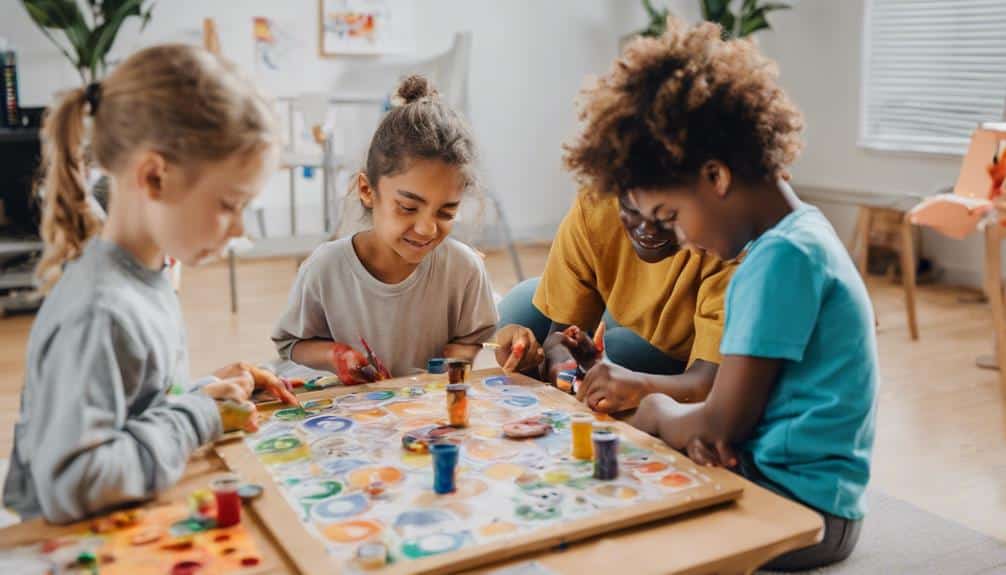
Recent Comments